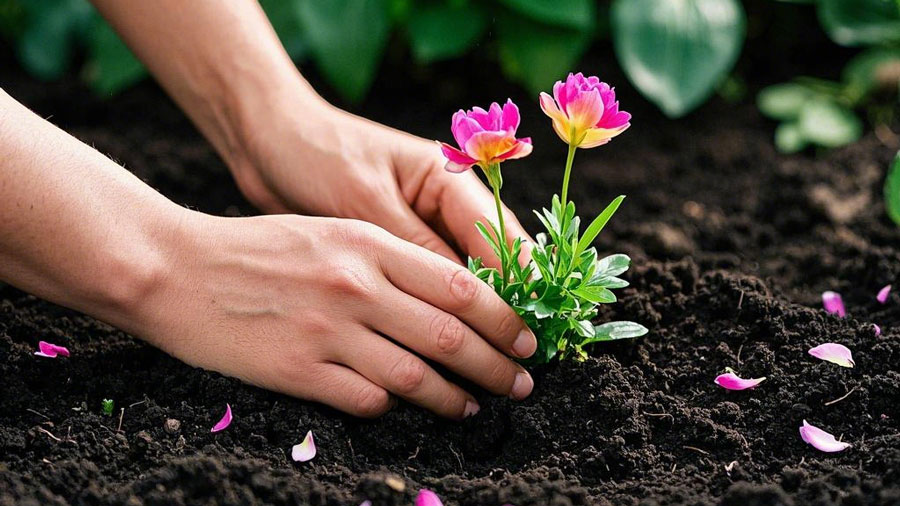Starting Your Grounding Journey

Starting your grounding journey is a simple and rewarding way to reconnect with the Earth and potentially improve your overall well-being. Whether you're new to grounding or looking to deepen your practice, here's a step-by-step guide to help you get started:
1. Understand the Basics of Grounding
What is Grounding?: Grounding, or earthing, involves making direct physical contact with the Earth's surface to absorb its natural electrical charge.
How Does It Work?: The Earth has a negative electrical charge due to its abundance of free electrons. When you connect with the ground, these electrons transfer into your body, potentially reducing inflammation, improving sleep, and promoting relaxation.
2. Choose Your Grounding Method
There are many ways to practice grounding, depending on your environment and preferences:
- Walking Barefoot: Walk on grass, soil, sand, or rocks for 20-30 minutes daily.
- Sitting or Lying on the Ground: Relax outdoors on natural surfaces.
- Gardening: Work with soil using your bare hands.
- Swimming in Natural Water: Swim in oceans, lakes, or rivers.
- Using Grounding Tools: Use grounding mats, sheets, or shoes for indoor grounding.
3. Start Small and Build Consistency
- Begin with short sessions, such as 10-15 minutes of walking barefoot or sitting on the ground.
- Gradually increase the duration as you become more comfortable.
- Aim for daily grounding to experience the most benefits.
4. Find a Suitable Location
- Outdoors: Look for natural surfaces like parks, beaches, or your backyard.
- Indoors: Use grounding mats or sheets if outdoor grounding isn't possible.
- Avoid insulated surfaces like asphalt, wood, or plastic, as they block the Earth's electrical charge.
5. Prepare for Grounding
- Go Barefoot: Remove shoes and socks to maximize contact with the ground.
- Dress Comfortably: Wear loose, breathable clothing to enhance relaxation.
- Stay Safe: Check the area for sharp objects, extreme temperatures, or unsafe conditions.
6. Combine Grounding with Other Activities
- Meditation: Practice mindfulness or meditation while grounded.
- Yoga: Do yoga outdoors on natural surfaces.
- Exercise: Walk, run, or stretch barefoot on grass or sand.
- Relaxation: Read, journal, or simply enjoy nature while grounded.
7. Use Grounding Tools for Indoor Practice
- Grounding Mats: Place under your feet or on your desk while working.
- Grounding Sheets: Use on your bed to stay grounded while sleeping.
- Grounding Shoes: Wear shoes with conductive soles for outdoor activities.
8. Track Your Progress
- Keep a journal to record your grounding sessions and any changes in your physical, mental, or emotional well-being.
- Note improvements in sleep, stress levels, pain, or energy over time.
9. Stay Consistent
- Make grounding a regular part of your routine, just like exercise or meditation.
- Even a few minutes of grounding each day can make a difference.
10. Explore Advanced Grounding Practices
- Forest Bathing: Spend time in a forest, focusing on the sights, sounds, and smells of nature.
- Grounding with Pets: Walk or play barefoot with your pets outdoors.
- Extended Grounding: Try longer sessions, such as camping or spending a day at the beach.
11. Be Patient and Open-Minded
- Some people notice benefits immediately, while others may take weeks to experience changes.
- Stay open to the process and enjoy the journey of reconnecting with the Earth.
12. Consult a Professional if Needed
- If you have specific health concerns or conditions, consult a healthcare provider before starting grounding practices.
- Grounding is generally safe, but it's always best to seek professional advice when necessary.
Sample Grounding Routine
Here's an example of how to incorporate grounding into your daily life:
- Morning: Walk barefoot on grass for 10-15 minutes while enjoying the sunrise.
- Afternoon: Sit on the ground during your lunch break or garden for 20 minutes.
- Evening: Use a grounding mat while working or relaxing indoors.
- Night: Sleep on a grounding sheet to improve sleep quality.
Conclusion
Starting your grounding journey is a simple, natural way to enhance your health and well-being. Whether you prefer walking barefoot outdoors or using grounding tools indoors, the key is consistency and mindfulness. By reconnecting with the Earth, you may experience reduced stress, improved sleep, and a greater sense of balance in your life. Enjoy the process and embrace the benefits of this ancient practice!
